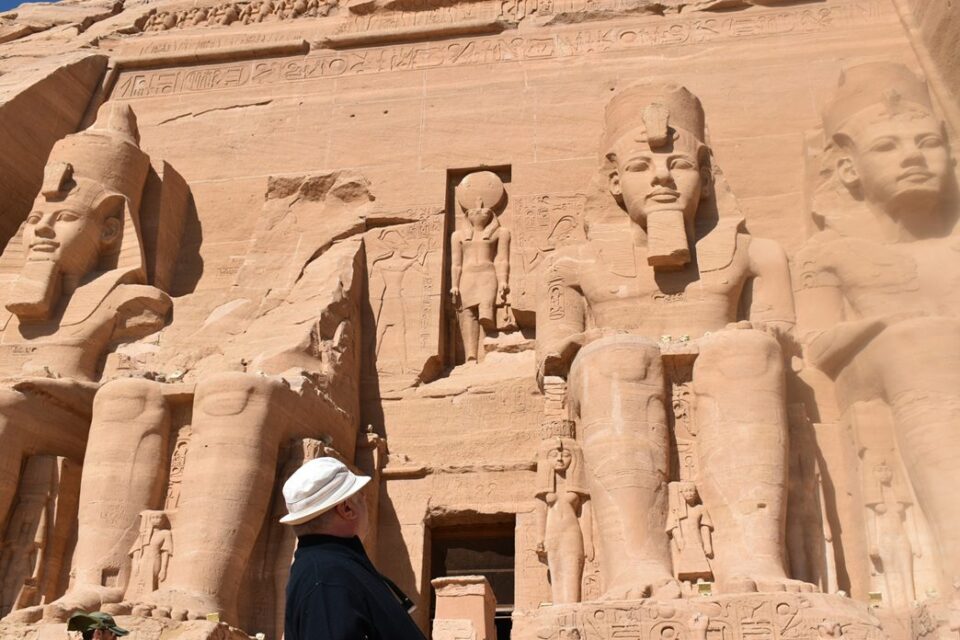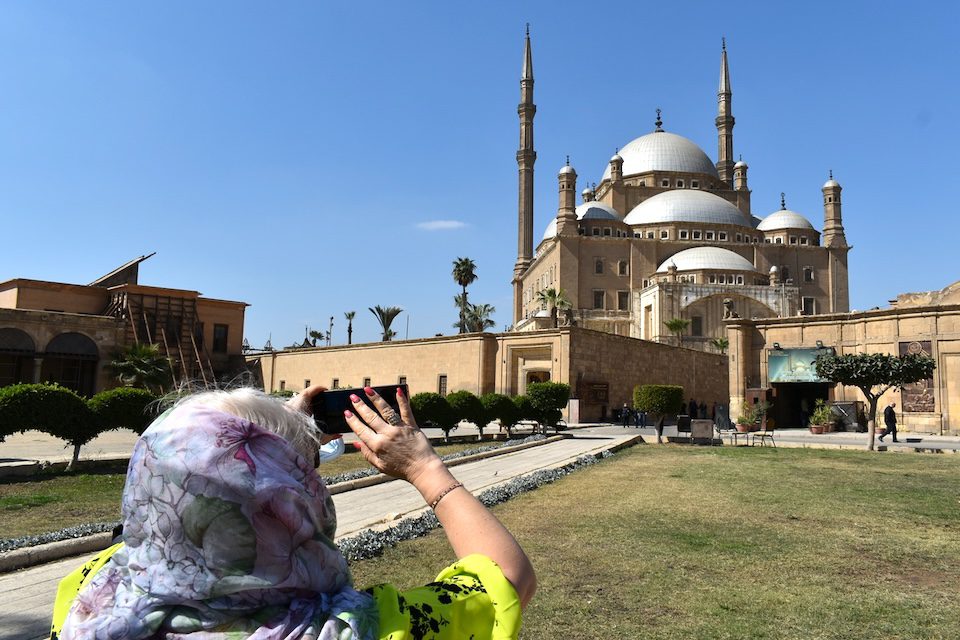
Embarking on a day trip from Cairo to Luxor or Aswan unveils a tapestry of Egypt’s rich history and culture, allowing travelers to immerse themselves in the grandeur of ancient civilizations. While both destinations are accessible from Cairo, the feasibility and experience of each vary, influenced by factors such as distance, available transportation, and the depth of exploration desired.

Egypt is a world of ancient ruins, rich culture, and surreal scenery. One of its greatest sites, together with many of the others that abound, includes the Nile River and the worldwide-renowned Pyramids of Giza. With all the wonder sites Egypt boasts, planning how you visit plays an important factor if you seek to have your very best Egyptian adventure. Recognizing the environment, peak holidays, and traditional activities can influence when you find yourself in Egypt so that it suits your optimum expectations.

Rising gloriously on the Giza Plateau, the splendid accomplishment of prehistoric engineering identified as the Great Pyramid of Giza is an icon of Egypt’s rich past. Built some 4,500 years back prior to that, this renowned architecture has fascinated travelers from all throughout the world, archaeologists, and historians. Beyond its obvious beauty, the Great Pyramid has secrets and features that still astonish and captivate.

Usually conveyed as the “World’s Greatest Open-Air Museum,” Luxor in Egypt is a lodging beyond compare. This city, tucked down on the Nile River, is a real gold mine of architectural legacy, art, and culture. Ancient temples, royal tombs, and relics that chronicle Egypt’s illustrious history line the streets and surrounds of Luxor. From the magnificence of the Karnak Temple to the mystery of the Valley of the Kings, every nook of Luxor whispers mysteries of past societies.

How the Pyramids Were Built Discover Ancient engineering feats such as the Pyramids of Giza are so impressive that even today scientists and engineers cannot be sure exactly how the pyramids were built, but they have learned a lot about the people who built them and the political power needed to make it happen.

Abu Simbel Temple Tour Explore Ramses built it to record his military victories and built a temple next to it out of love for his wife, and his Holy of Holies witnesses the sun’s rays twice a year. On its walls are spread Pharaonic inscriptions and hieroglyphic writings that bear witness to King Ramses’ victories in his military wars, most notably the Battle of Kadesh against the Hittites, which witnessed the first peace treaty known to ancient history. In addition to that, the temple embodied another image of the Egyptian pharaoh’s personality, which is the romantic side and his love for his beloved wife Nefertari, for whom he built a temple of love, next to his great temple and sanctified her femininity and described her as a goddess in some inscriptions and raised her status and position in ancient Egyptian society. The Abu Simbel Temple was first discovered in the modern era in 1913, about 200 years ago. Before that, the temple was completely covered by sand, and the temple was completely buried under the sand for a long time. The temple remained in this state until a Swiss traveler named “Johann Burg Hart” came in 1813. He was on an official mission to discover the sources of the Nile in southern Egypt and northern Sudan. During his journey using a Nile boat, he noticed a part of the temple appearing and recorded it in his diary. Three years later, an Italian explorer named “Jovan” came after him. Archaeologists considered him an antiquities thief because he was excavating for antiquities with funding from the British delegate at the time of the occupation. His excavation was in an unscientific manner that harmed Egyptian antiquities. He took with him many small statues of the temple to Britain, and they are currently in the British Museum in London. However, he is credited with discovering the temple because he removed tons of sand from the temple, which took him about 10 consecutive years. The reason for naming the temple Abu Simbel goes back to the locals who refused to show the discoverers the location of the temple, but the discoverers communicated in a way that a child showed them the location of the temple, and this child was attributed to the name of this temple “Simbel” – which is a common, unwritten story – but the temple was called “Per-Ramesses” by the ancient Egyptians, the pharaonic name meant “the house of Ramses, beloved of Amun, who was glorified by his victories”. The Abu Simbel Temple was built approximately 3200 years ago, or in the 12th century BC, and this temple was built by one of the most famous kings of Egypt throughout ancient Egyptian history, because he ruled for a long period and made great efforts in Egypt from an architectural and military perspective at this time, and he is Ramses II, the third king of the 19th dynasty in the time of the modern state, according to the division of the Greek historian “Manetho” who divided the pharaonic rulers into “families”. The walls of the Abu Simbel Temple recorded the wars of Ramses II with his enemies, who ruled Egypt for 67 years and cared about the architecture of the temples in addition to his strength and military campaigns. He was keen to show his greatness through the temple and its structure carved into the solid rock of the mountain. The facade of the temple is preceded by 4 giant statues representing King Ramses II sitting on the throne in the traditional position. The height of the facade is about 33 meters, its width is 38 meters, and the height of each statue is about 20 meters, indicating the enormity of the temple and its facade. The statue exceeds the size of a normal human many times. On the right and left, and between the legs, there are smaller statues representing members of the royal family, in addition to other statues of two deities and the sacred sun disk, in addition to the presence of 22 baboons, the number of the regions of Egypt at this time, which symbolizes the worship of the sun. He chose it because this animal comes out to the sun at sunrise every day and raises its hand, and he considered it to be rejoicing at the sun’s emergence, which was embodied in the temple. Egypt was the first country to know peace treaties, as shown by the walls of the Abu Simbel Temple, which recorded the first written peace treaty between the Pharaohs and the Hittites of Anatolia in Asia (Turkey, Iraq, Syria) and other regions. These wars lasted for about 23 years, until King Ramses himself came out at the head of an army in the most famous Battle of Kadesh in ancient Egyptian history, and victories were recorded for the two kingdoms, but they were fierce battles that took place in the Syrian city of Kadesh, in which both sides suffered heavy losses. Next to the great temple of King Ramses II in Abu Simbel, there is another temple, the small temple of Nefertari. Although Ramses had 100 children after marrying 24 women, Nefertari was his beloved and favorite wife, so he built a temple of love for her next to his great temple, in a precedent that is the first of its kind in Pharaonic history, to the point that he ranked his wife among the gods without a scientific explanation for this meaning that King Ramses did. The Temple of Nefertari is dedicated to Ramses’ wife and beloved, and he wrote historical phrases to her, confirming that this temple is for his wife, for whom the sacred sun rises. The façade of the temple of the wife consists of 6 large statues, 4 of which represent King Ramses and 2 represent Queen Nefertari. Each statue stands at about 10 meters high. On both sides, there are smaller statues of royal children—sons and daughters of the king and queen—with their names inscribed beside...

Forgotten Landmarks of Cairo Explore The Pyramids of Giza, the Sphinx and the Cairo Tower are among the most famous and most visited historical landmarks in Cairo, which receive great media publicity. But what about other landmarks with a long history such as the Babylon Fortress, the Church of Saint Abu Serga, and the Windsor Hotel? Many of these monuments date back more than two thousand years, but do not receive the same great media coverage or fame among tourists that other landmarks receive. Take a tour with us to some of these landmarks and discover the history behind them:







